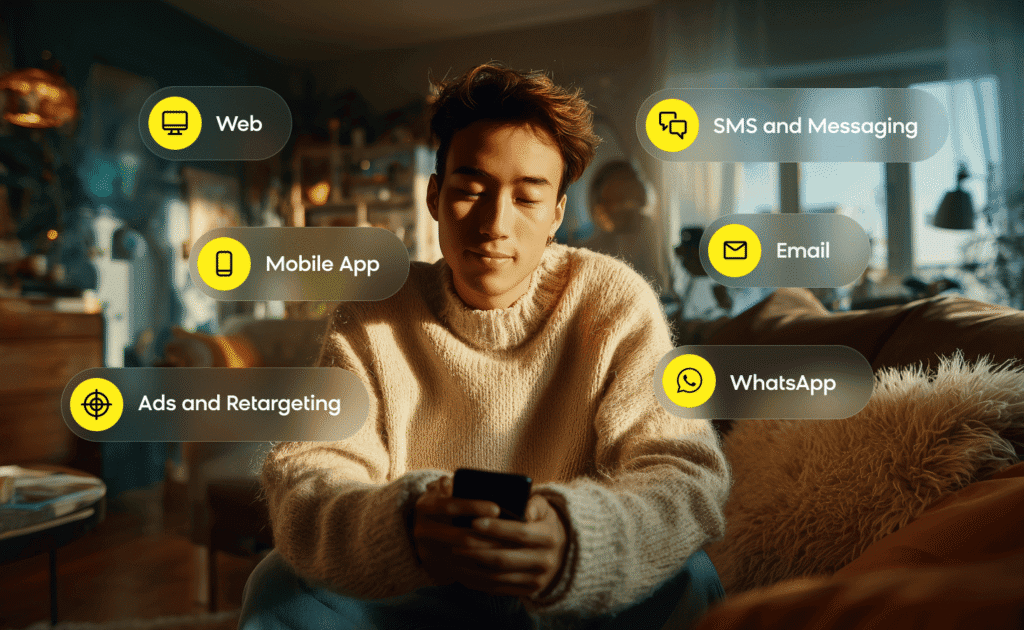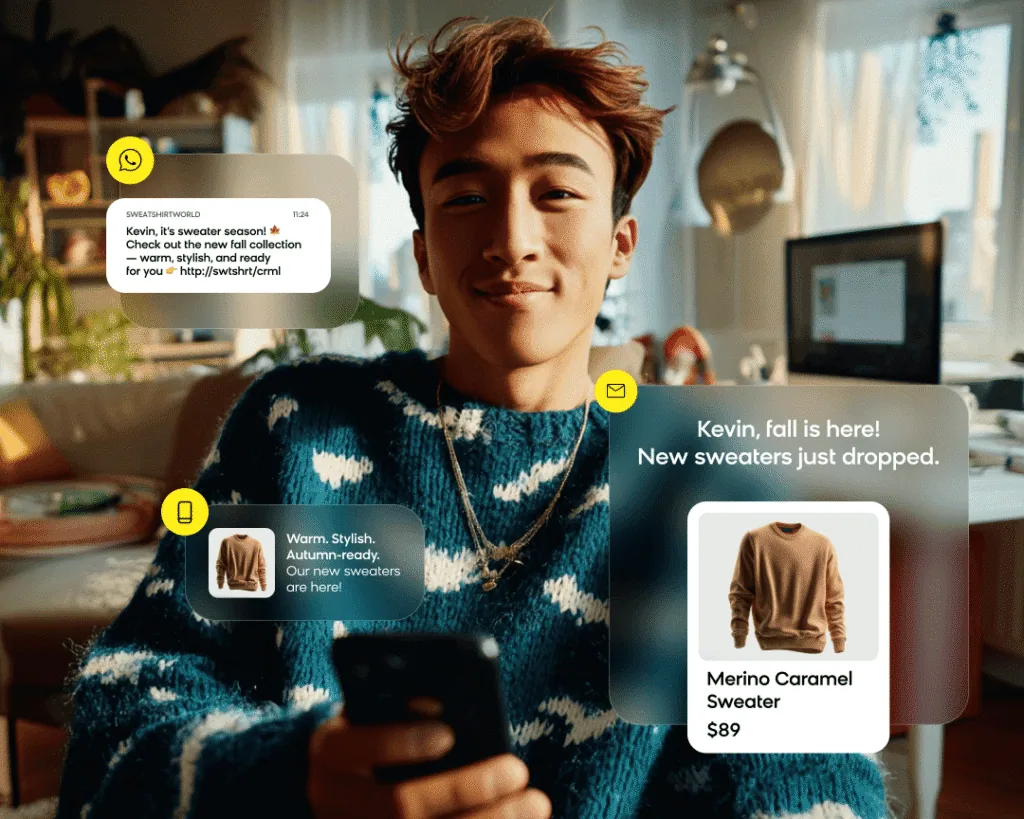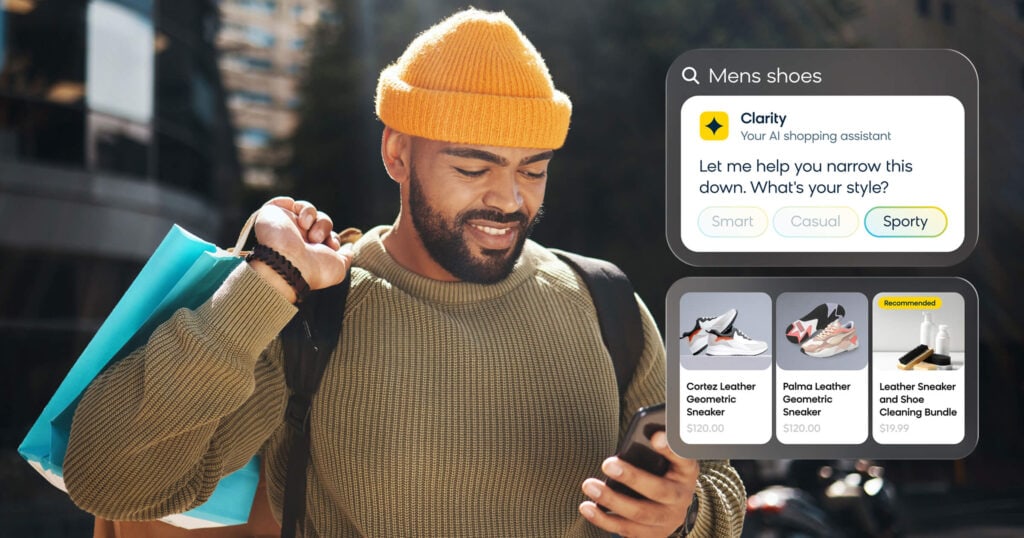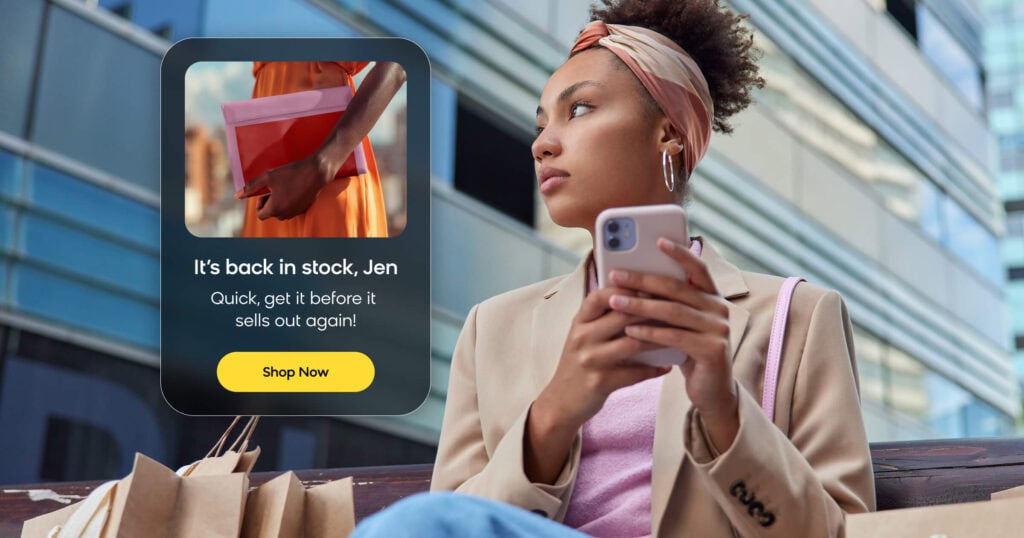Audience activation defines how brands use customer data to deliver relevant experiences across channels. For the past decade, this process relied on rules-based segmentation like lookalike audiences, past purchase behaviors, and demographic clustering. Marketers built static segments, pushed them through predetermined workflows, and hoped for engagement.
This approach no longer works.
The rapidly evolving privacy landscape, fragmented customer signals, and rising consumer expectations for relevance have rendered traditional segmentation inadequate. Static segments can’t capture the dynamic nature of modern shopping behavior, where a customer’s intent shifts between browsing sessions, devices, and channels.

Bloomreach has redefined audience activation through agentic AI that doesn’t just suggest the next action, but autonomously takes it. Let’s explore how agentic AI is transforming the way brands activate their audiences.
Why Legacy Platforms Can’t Keep Up
Current customer data platforms and marketing automation systems excel at unifying basic data sources — CRM records, transactions, web activity, etc. They enable batch segments and simple journey rules based on predetermined triggers.
However, they struggle with what matters most for effective audience activation: real-time context interpretation.
When a customer browses winter coats on mobile during lunch, then researches hiking boots on desktop that evening, they’re presenting two distinct intent signals. Traditional platforms treat these as separate, unrelated events rather than a coherent journey requiring different merchandising and messaging strategies.
Cross-channel orchestration remains fragmented. Email, SMS, website personalization, and paid media operate through separate systems with different data models and activation timelines. This creates disjointed customer experiences and missed opportunities for meaningful audience activation.
The fundamental question becomes compelling: Why stop at prediction when technology can enable autonomous action? Traditional platforms predict what customers might want, then require manual intervention to activate those insights. This introduces latency, human error, and scalability constraints that limit effective personalization.
Evolving From Static Segments to Autonomous Experiences
Audience activation has evolved through distinct stages, each building upon the limitations of the previous approach:
Stage 1: Static Segmentation
Basic demographic segments where identical messages are sent to broad groups. This type of segmentation has limited relevance and no sophistication in audience activation.
Stage 2: Rules-Based Journeys
“If X, then Y” logic enabled triggered campaigns like cart abandonment emails. These are more dynamic, but require extensive manual configuration.
Stage 3: Intelligent Optimization
AI improved relevance through predictive analytics and content optimization. While this was much more effective, journey orchestration was still a largely manual process.
Stage 4: Autonomous Personalization
AI systems interpret signals and take action across all touchpoints without predefined rules. These agents understand context, adapt to changing patterns, and orchestrate experiences in real time for true audience activation.
Most platforms operate at stage 2 or 3. Bloomreach delivers stage 4 capabilities, synchronizing experiences across all customer touchpoints through a single, autonomous orchestration engine.

This distinction becomes crucial as customer journeys grow increasingly complex. Traditional rules-based systems can’t scale to handle the exponential growth in potential customer paths and interaction combinations that modern audience activation requires.
Autonomous vs. Traditional Audience Activation
| Capability | Traditional Platforms | Bloomreach |
|---|---|---|
| Audience Definition | Static CRM segments | Real-time adaptive clusters |
| Activation Latency | Batch/hours/days | Sub-second |
| Data Inputs | Identity + transactions | Identity + behavior + intent + predictions |
| Personalization Logic | Rules-based | Agentic AI (generative + predictive) |
| Channel Orchestration | Disconnected | Unified (marketing + commerce) |
| Campaign Setup | Manual workflow chains | Self-authored journeys via AI |
Traditional platforms require marketers to anticipate customer behavior patterns and configure appropriate responses through manual workflows. This works for predictable, linear journeys but breaks down as interactions become complex and fragmented.
Autonomous platforms interpret signals and generate appropriate responses without requiring predefined logic chains. This enables audience activation that scales with business complexity while reducing operational overhead.
Is Your Audience Activation Ready for Autonomy?
Evaluate your current personalization capabilities against autonomous platform requirements:
Still building segments based on static CRM data?
If your customer segmentation relies primarily on demographic information and historical purchase data, then you’re missing out on dynamic intent signals. You’ll also be slower to adapt to changing behavior patterns.
Are your teams manually duplicating campaigns across tools?
Manually replicating campaigns indicates disconnected systems that can’t orchestrate unified customer experiences or optimize cross-channel performance.
Is cart abandonment your best automation use case?
While valuable, cart abandonment campaigns represent basic behavioral triggers rather than sophisticated journey orchestration based on comprehensive customer understanding.
Do your marketing, site, and product communicate and work together?
Disconnected systems create inconsistent customer experiences where email promotions don’t align with website merchandising or product recommendations conflict across touchpoints.
Is personalization based on older signals?
Batch processing and delayed activation prevent capitalizing on immediate intent signals and real-time optimization opportunities essential for modern audience activation.
If three or more conditions apply, then your platform may be limiting your growth potential and the quality of your customer experiences. These indicators suggest that you’re likely ready for autonomous platforms.
Brands Already Winning with Autonomy
Leading brands demonstrate the power of autonomous audience activation through measurable results:
PrettyLittleThing
Strategy: AI-led push journeys based on real-time intent signals
Result: 133% increase in mobile push revenue through personalized reengagement campaigns that deliver targeted promotions at optimal timing based on browsing behavior.
Desigual
Strategy: Global AI personalization across 72 countries
Result: 75% reduction in campaign build time while running 80 simultaneous campaigns across international markets with market-specific merchandising and cultural preferences.
HP Tronic
Strategy: Weblayer personalization for first-time visitors
Result: 136% increase in new visitor conversions, which was a 16.4% conversion rate among new customers who received welcome campaign weblayers.
These results demonstrate autonomous personalization’s dual benefit: better customer engagement and reduced operational complexity through intelligent audience activation.

The Future of Customer Experiences Is Responsive, Not Reactive
Traditional audience activation focused on knowing customers through historical data analysis. This backward-looking approach provided basic personalization but couldn’t anticipate or respond to dynamic customer needs in real time.
Autonomous platforms completely transform this approach. Rather than simply knowing a few facts about customers, these platforms understand, predict, and serve them autonomously across every digital interaction, redefining what effective audience activation means in practice.
With Bloomreach, you get a powerful combination of autonomous marketing, intent-driven product discovery, and conversational shopping in a single platform. Now you can go beyond simple audience activation and create truly personalized experiences at every step of your customers’ journey.
It’s time to evolve your audience activation strategy. Request a personalized demo to see autonomous personalization in action.













